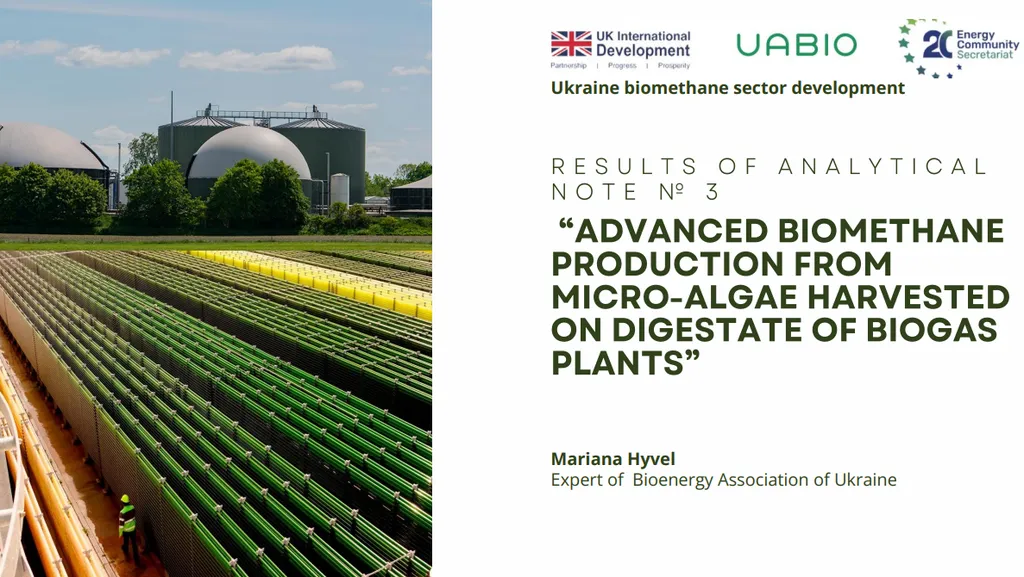In the heart of Ukraine, a quiet revolution is brewing, not in the fields of wheat or sunflowers, but in the realm of bioenergy and circular economy. Roman Lohosha, a researcher from Vinnytsia National Agrarian University, has been delving into the world of digestate, a by-product of anaerobic fermentation of biomass, and his findings could reshape the agricultural and energy landscapes.
Digestate, often overlooked, is a treasure trove of organic matter and nutrients. It’s the leftover material after biomass has been broken down by microorganisms in the absence of oxygen, a process that also produces biogas, a valuable renewable energy source. Lohosha’s research, published in the Baltic Journal of Economic Studies (translated from Latvian as ‘Baltijas Ekonomikas Pētījumu Žurnāls’), highlights the potential of digestate as an effective organic fertilizer, capable of improving soil health and boosting agricultural productivity.
“The chemical composition of digestate makes it a powerful tool for enhancing soil fertility,” Lohosha explains. “It promotes humus accumulation, restores microbiocenosis, and can significantly improve the physical and chemical properties of soils.” This is not just good news for farmers; it’s a boon for the energy sector too. As biogas plants spring up across the country, digestate is becoming an increasingly abundant by-product. Finding a commercial use for it could make biogas production more viable and attractive to investors.
Lohosha’s research delves into the international experience of regulating digestate use, drawing lessons from the EU, Great Britain, China, the USA, Canada, and Australia. He emphasizes the need for further standardisation, infrastructure provision, and incentive policies to develop the digestate market. “The key barriers to commercialising digestate are regulatory, technological, logistical, and informational,” he notes. “Overcoming these barriers could unlock the vast economic potential of digestate.”
The implications for the energy sector are significant. As countries strive to meet their renewable energy targets, biogas is set to play a crucial role. However, the viability of biogas production often hinges on the effective utilization of digestate. By developing a robust market for digestate, we could make biogas production more sustainable and profitable.
Lohosha’s research also sheds light on the potential environmental risks associated with the uncontrolled use of digestate, such as water eutrophication and heavy metal accumulation. This underscores the need for careful regulation and monitoring, ensuring that the shift towards a circular bioeconomy is both sustainable and safe.
As Ukraine transitions to a circular bioeconomy, Lohosha’s research offers a roadmap for integrating digestate into agricultural systems. His scenario forecast predicts a significant increase in the share of digestate in the organic fertilizer market by 2030, from 8% to 22%. This could not only boost agricultural productivity but also enhance the viability of the biogas sector, creating a virtuous circle of economic and environmental benefits.
In the words of Lohosha, “The future of digestate lies in its recognition as a valuable commodity, not just a by-product.” As we stand on the cusp of a bioenergy revolution, his research serves as a timely reminder of the untapped potential that lies beneath the surface, waiting to be harnessed for the benefit of all.

